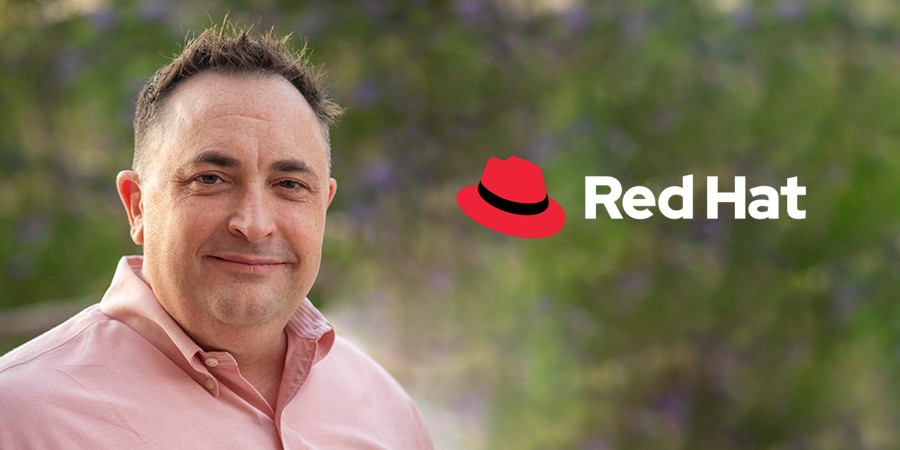Red Hat is setting the standard for what hybrid cloud can be and do, with its flexible portfolio. The software company uses open source to unify and empower communities on a broad scale. Darrell Jordan-Smith, SVP, Telco, Media and Entertainment and Industries, sat down with Telecom Review to share his views on cloud technologies, enterprise service delivery and cross-industry opportunities, among others.
Can you share with us how you help organizations drive new revenue and adopt innovative cloud technologies?
Cloud computing is the act of running workloads within clouds, which are IT environments that abstract, pool and share scalable resources across a network. Cloud management and automation tools help maintain greater visibility and oversight across these disparate resources. At Red Hat, we are setting the standard for what hybrid cloud can be and do — and with a flexible portfolio to help companies take the next defining step for their industry. Only an open approach to hybrid cloud infrastructure can give companies the flexibility and freedom they need to unlock the full potential of edge computing.
We see edge computing as an opportunity to extend the open hybrid cloud all the way to the data sources and end users. Edge is a strategy to deliver insights and experiences at the moment they’re needed. We’ve seen edge computing transform many fields — manufacturing, automotive, energy, utilities, finance, healthcare, retail, telecommunications and government.
How do you think this global shift in service delivery will progress in the next five to ten years? What's the key role of Red Hat on this journey?
Enterprises are increasingly using data to offer new services, improve in-store experiences, and keep operations running smoothly. But most of them aren’t equipped with large amounts of computing power. For these kinds of enterprises, it makes sense to centralize the data storage while extending a uniform app environment out to remote locations.
Since the COVID-19 pandemic, most organizations are well into their digital transformation. They stood up new technologies, launched new customer experiences and adapted to dramatic changes in both processes and culture. As Red Hat continues to be an enabler of change and better meet the needs of the global communications industry, we are evolving our approach to accelerate our commitment to be the number one hybrid cloud partner.
Which cross-industry opportunities are most promising for the enterprises and how is the telecom industry benefiting from these?
Across industries and organizations, we are all highly dependent on one another. Thinking about the telecommunications and industrial sectors in particular, there is a mutually supportive, symbiotic relationship between these industries; 5G development cannot be successful without industrial use cases, which, in turn, are based on telco technologies.
But numerous challenges remain: reducing network complexity, maintaining security, improving agility and ensuring a vibrant ecosystem. And the only way to address and solve those is by tapping into the collective wisdom of the community. At Red Hat, we use open source to unify and empower communities on a broad scale. The open source ecosystem brings people together to focus on a common problem to solve with software. That shared purpose can turn isolated efforts into collective ones so that changes are industry-wide and reflect a wide range of needs and values.
Which particular Red Hat products and services significantly impact MENA's service providers?
Red Hat accelerates AI/ML workflows and delivery of AI-powered intelligent applications with self-managed Red Hat OpenShift, or our AI/ML cloud service. Data science and machine learning are helping drive innovation and business value in nearly every industry. For many companies, the biggest barrier to adoption is the complexity of wiring together the necessary data sources with diverse model training and model deployment technologies.
With Red Hat OpenShift Data Science, Red Hat’s contributions to Open Data Hub, and our extensive partner ecosystem, we’re helping organizations overcome such complexity to begin harnessing the full potential of machine learning from the leader in trusted open source technology.
From a global perspective, how will an open hybrid cloud platform continue to enhance CSPs’ services and value-added offerings?
To get the most out of the cloud, applications should be cloud-native. As more and more companies embrace containers and cloud-native technologies, IT organizations are tasked with addressing existing systems and workloads, many of which may run on infrastructure or resources that aren’t compatible with the realities of modern computing. However, most large enterprises have a legacy application backlog, so the question for them is how to modernize and integrate the new with the old.
Red Hat Virtualization environment can contain multiple data centers; the data center infrastructure allows you to keep these centers separate. A data center is considered a container resource in that it is comprised of logical resources in the form of clusters and hosts; network resources, in the form of logical networks and physical NICs; and storage resources, in the form of storage domains.










